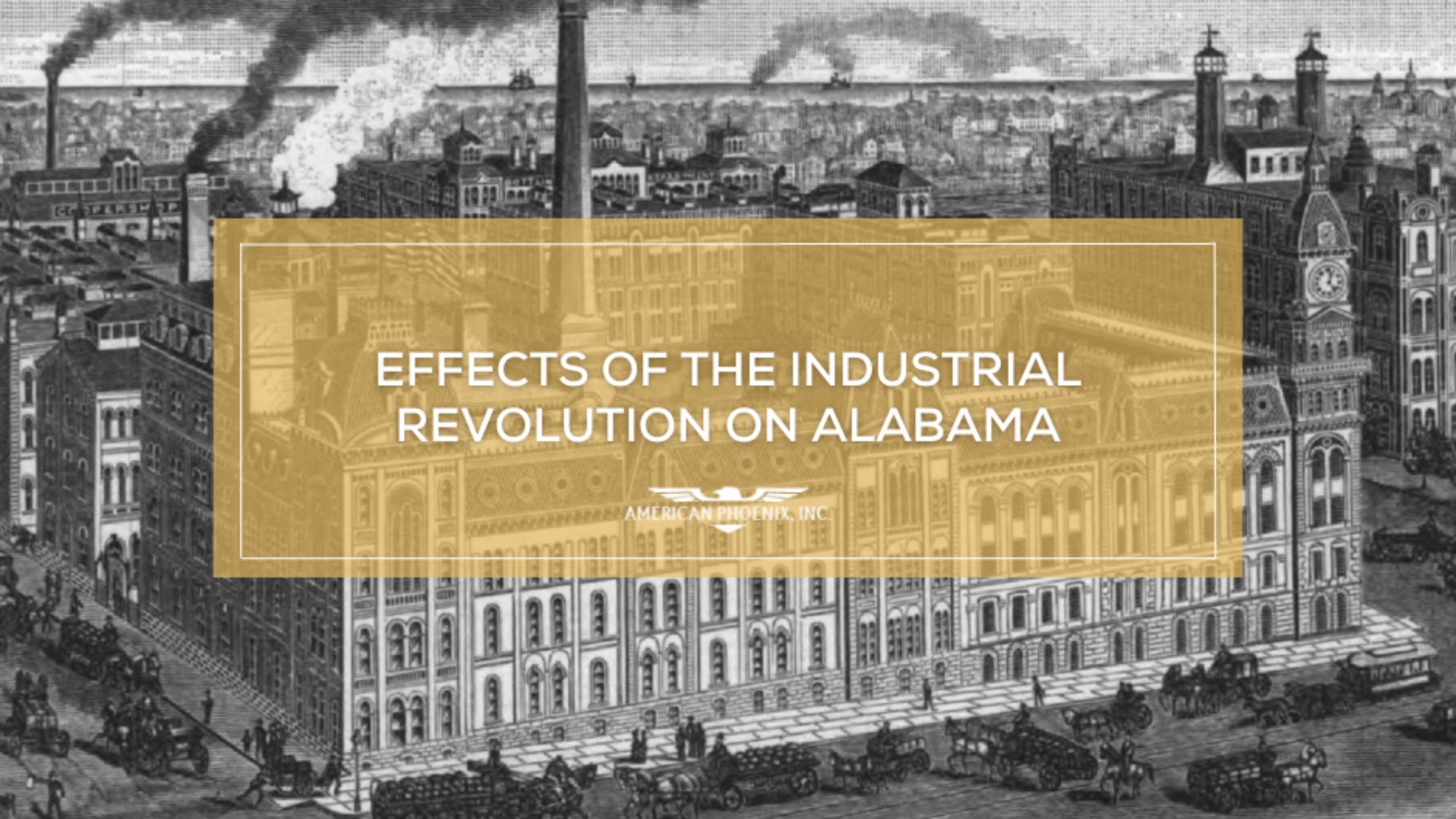All of our API locations are situated in states with rich histories in manufacturing. Alabama experienced significant growth following the Industrial Revolution, becoming the most industrialized state in the South.
Alabama, once a quiet agrarian state, found itself on the cusp of change in the late 18th and early 19th centuries. The arrival of the Industrial Revolution set off a chain reaction that revolutionized the state’s economy, society, and culture. Gone were the days of small-scale farming, as factories and mills began to spring up everywhere.
A Boost to Manufacturing
Amidst the cotton fields and picturesque landscapes, Alabama’s manufacturing sector surged. The state was primed for industrial success with abundant natural resources, including iron ore, coal, and limestone.
Technological breakthroughs like steam engines and mechanized cotton gins transformed the cotton industry, propelling Alabama to the forefront of cotton production. This surge in cotton manufacturing fueled the need for more textile mills, creating thousands of job opportunities and driving economic growth across the state.
The Rise of Steel and Iron Production in Birmingham
A beacon of progress in the heart of Alabama, Birmingham witnessed an unprecedented boom during the Industrial Revolution. With the discovery of rich coal seams and iron ore deposits, Birmingham’s furnaces roared to life, becoming a hub for steel production. As this new industry soared, the city’s skyline expanded, and its influence grew exponentially.
The rise of iron and steel mills earned the city the moniker “The Pittsburgh of the South.” Innovations such as the Bessemer Converter, a revolutionary steelmaking process, enabled the industry to flourish. The Bessemer process reduced production costs, increasing output and making steel more affordable for various applications.
Impact on Society and Culture
Beyond the economic boom, the Industrial Revolution also impacted Alabama’s residential conditions. As factories emerged, the state saw a significant influx of immigrants and rural-to-urban migration. The workforce diversified along with the industries, bringing in people from various backgrounds and laying the foundation for a more cosmopolitan society.
Population densities in major cities increased quickly as Alabama became the most industrialized state in the south, which also led to the establishment of several workers’ unions.
Over the years, Alabama’s identity has been shaped by embracing modernity while preserving its rich traditions and history.
The Industrial Revolution’s effects on Alabama were transformative, forever altering the state’s landscape and identity. From the rise of steel mills in Birmingham to the mechanization of cotton farming, manufacturing advancements played a key role in this remarkable journey. The spirit of innovation that emerged during this era continues to shape Alabama’s progress, reminding us of the power of change and adaptation.
For more history lessons, check out Effects of the Industrial Revolution in Wisconsin, Effects of the Industrial Revolution in North Carolina, and The History of Manufacturing in Eau Claire.
For more articles From the Plant, check out our blog.


Add a Comment